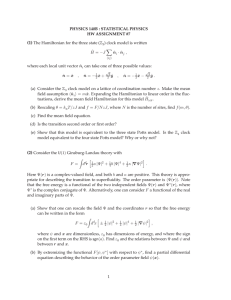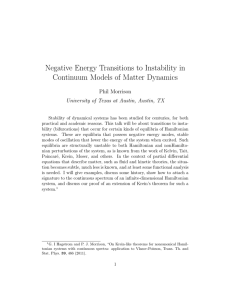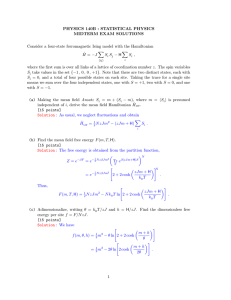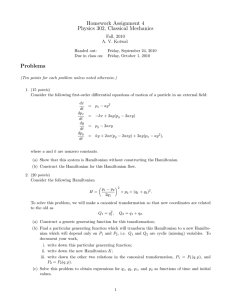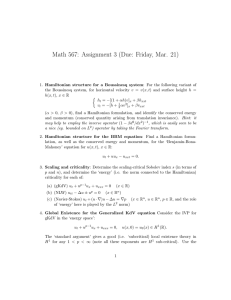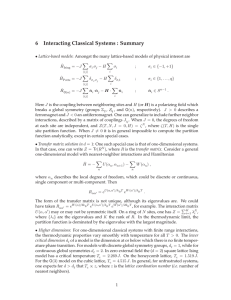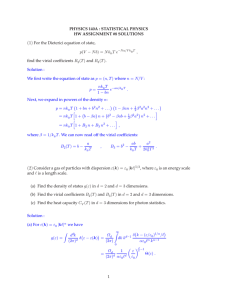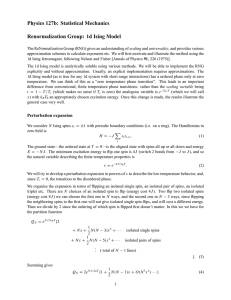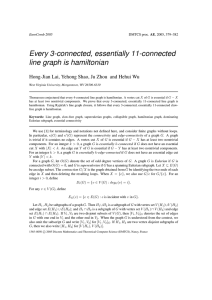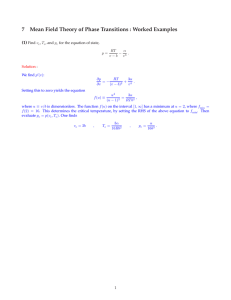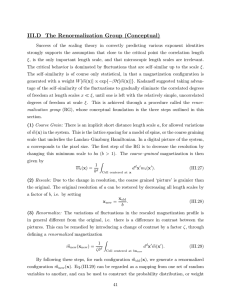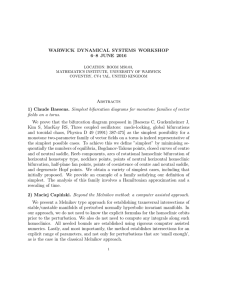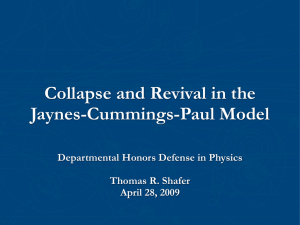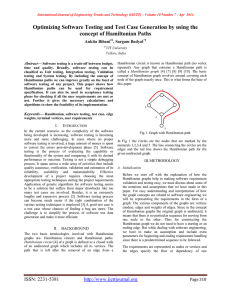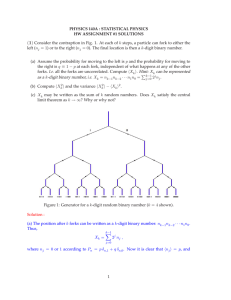(1)
advertisement
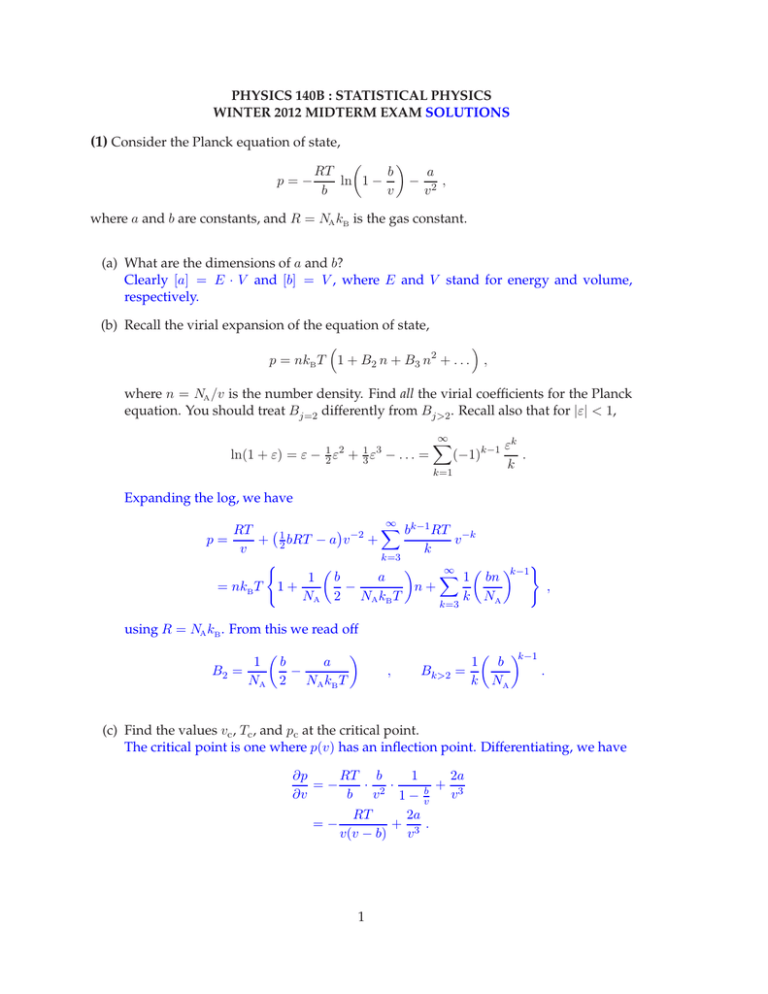
PHYSICS 140B : STATISTICAL PHYSICS
WINTER 2012 MIDTERM EXAM SOLUTIONS
(1) Consider the Planck equation of state,
p=−
RT
b
a
ln 1 −
− 2 ,
b
v
v
where a and b are constants, and R = NA kB is the gas constant.
(a) What are the dimensions of a and b?
Clearly [a] = E · V and [b] = V , where E and V stand for energy and volume,
respectively.
(b) Recall the virial expansion of the equation of state,
p = nkB T 1 + B2 n + B3 n2 + . . . ,
where n = NA /v is the number density. Find all the virial coefficients for the Planck
equation. You should treat Bj=2 differently from Bj>2 . Recall also that for |ε| < 1,
ln(1 + ε) = ε − 21 ε2 + 31 ε3 − . . . =
∞
X
εk
(−1)k−1
.
k
k=1
Expanding the log, we have
∞ k−1
−2 X
b RT −k
RT
1
+ 2 bRT − a v +
v
p=
v
k
k=3
(
)
∞
X
a
1 bn k−1
1 b
,
−
n+
= nkB T 1 +
NA 2 NA kB T
k NA
k=3
using R = NA kB . From this we read off
1 b
a
B2 =
−
NA 2 NA kB T
,
Bk>2
1 b k−1
.
=
k NA
(c) Find the values vc , Tc , and pc at the critical point.
The critical point is one where p(v) has an inflection point. Differentiating, we have
RT b
1
2a
∂p
=−
· 2·
+ 3
b
∂v
b v 1− v
v
RT
2a
=−
+
.
v(v − b) v 3
1
Setting ∂p/∂v = 0, we have
u2
2a
=
,
u−1
bRT
where u = v/b is dimensionless. On the interval u ∈ [1, ∞], the function f (u) has a
unique minimum, and setting f ′ (u) = 0 gives u = 2. The minimum value for f is
then f (2) = 4. Thus, vc = 2. Evaluating the above equation at the minimum of the
LHS determines Tc , and plugging in we get pc = p(vc , Tc ). We find
f (u) =
vc = 2b
,
Tc =
2
2bR
,
pc = (2 ln 2 − 1) ·
a
.
4b2
(2) The Hamiltonian for the four state (Z4 ) clock model is written
Ĥ = −J
X
n̂i · n̂j ,
hiji
where each local unit vector n̂i can take one of four possible values: n̂i ∈ {x̂, ŷ, −x̂, −ŷ}.
(a) Consider the Z4 clock model on a lattice of coordination number z. Make the mean
field assumption hn̂i i = mx̂. Expanding the Hamiltonian to linear order in the fluctuations, derive the mean field Hamiltonian for this model ĤMF .
The mean field Hamiltonian is
X
n̂i .
ĤMF = 12 N zJm2 − zJmx̂ ·
i
(b) Rescaling θ = kB T /zJ and f = F/N zJ, where N is the number of sites, find f (m, θ).
We have
f (m, θ) = 12 m2 − θ ln Tr emx̂·n̂/θ
n̂
1 2
= 2 m − θ ln 12 + 12 cosh(m/θ)
1
m4
1
= 2 1−
+ O(m5 ) .
m2 +
2θ
96 θ 3
P
Here we have defined Trn̂ = 41 n̂ as the normalized trace.
(c) Find the mean field equation and the critical value θc .
The mean field equation is
0=
∂f
sinh(m/θ)
=m−
.
∂m
1 + cosh(m/θ)
Expanding the RHS to lowest order in m and setting the slope to 1, we find θc = 21 .
(d) Is the transition second order or first order?
There is no cubic term in the Landau expansion, and the coefficient of the quartic
term is positive. Second order.
2




